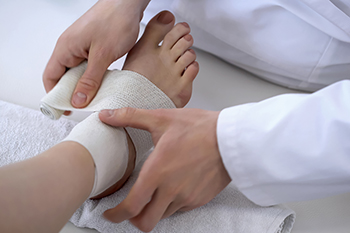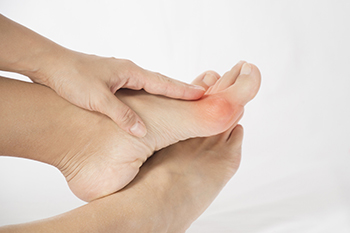
Ankle sprains, a common injury, can occur when the ligaments connecting the bones in the ankle stretch or tear due to sudden twisting or rolling movements. Symptoms of an ankle sprain include pain, swelling, and tenderness around the affected area. Bruising may develop, and walking can be challenging, if not impossible. Prompt treatment is essential, and can begin with rest and wrapping the affected foot, and elevating it to reduce the swelling. Performing gentle exercises and stretches can help regain strength and flexibility. Depending on the severity, a medical professional might recommend braces, crutches, or physical therapy. Restoring full functionality involves diligent adherence to the prescribed rehabilitation plan. Understanding the symptoms and promptly seeking appropriate care can facilitate a smoother recovery from this discomforting setback. It is suggested that you see a chiropodist if you suffer from an ankle sprain.
When one or more ligaments in the ankle overstretch or tear due to injury, an ankle sprain occurs. If you would like to learn more about ankle sprains, please consult with one of the chiropodists from The Footcare Centre. Our chiropodists can help you maintain the health of your lower limbs and your mobility.
Symptoms of an ankle sprain vary depending on the severity of the injury, but may include:
Pain
Swelling
Bruising
Tenderness
Difficulty walking
Ankle instability
A reduced range of motion in the ankle
Treatments for an ankle sprain may consist of:
Resting the injured ankle
Applying ice
Elevating the ankle
Compressing the ankle
Over-the-counter pain medications
Ankle braces or other devices to take weight off of the ankle
Ankle exercises
Surgery (in rare cases)
It’s important for the sprained ankle to heal correctly and fully in order to avoid repeated injury. If you have any questions, please feel free to contact our office located in . We offer the newest diagnostic and treatment technologies for all your foot care needs.





